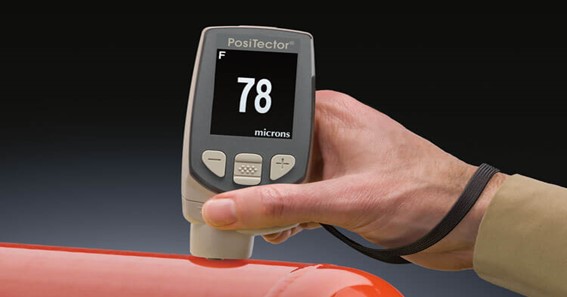How Do Coating Weight Gauges Help Save Time and Money?
In a post-COVID world, supply chain woes have led to longer material lead times and increased costs for manufacturers. Evermore, yield, and efficiency have become more and more critical for manufacturing processes.
This is an especially sensitive topic for the steel coatings industries such as galvanizing and tin-plating. The material coatings costs have skyrocketed in the last few years, and this is bad news for any manufacturer without a Coating Weight Gauge or those who have one installed but lack reliable support.
Producers and processors in this field seek to maximize material yield by avoiding “over-coating” the steel substrate in galvanizing, aluminizing, or tin-coating processes. Over-coating unnecessarily wastes raw materials and increases the manufacturers’ overall costs. Additionally, some customers can run their line at higher speeds by having precision feedback on coating. Over a full year of production, this higher speed and more efficient coating application can save a given customer tens of millions of dollars.
Their customers’ extremely tight quality requirements force coatings producers to meet minimum coating-weight specifications, violation of which could result in rejected or scrapped material. As under-coated material could also lead to end-user corrosion, this is an extremely delicate topic.
The easiest way to optimize this balance – backed up by quality evidence – is to integrate an online Coating Weight Gauge onto a coating line. Coating Weight Gauges use x-ray or other radiation technology to precisely measure the amount of coating applied to a substrate. These gauges provide real-time feedback for operators to adjust their layers application as quickly as possible not to waste material. This not only optimizes yield but also maximizes uniformity on a coated material.
Global Gauge Coating Weight Systems are state-of-the-art systems that perform precise measurements on coatings on Galvanizing, Aluminizing, or Tin Plating Lines. The technology uses x-rays to fluoresce the substrate of the material. As our detectors identify backscattered fluorescence, we can correlate the amount of fluorescence being blocked out by the coatings. We can measure the coating thickness using this methodology to an extremely precise degree. A standard coating weight gauge has coating heads on both sides of the strip to ensure that overcoating is not taking place at any point on the strip.
Another sensitive topic for customers now more than ever is availability. Many equipment suppliers in this niche have historically been Germany-based. When the pandemic began, this left a large subset of North American coatings producers without a reliable coating weight gauge supplier to perform service on their gauges. This situation has only been further amplified by customers’ needs for components and the supply chain woes throughout the industry. Meanwhile, Global Gauge has remained proudly based in Ohio. Due to our proximity to the USA-based customer base, we tend to be a less expensive option for many customers and are available at a moment’s notice for emergency assistance. This helps to reduce downtime and be there when our customers need us the most.
Throughout 22+ years of growing to become one of the largest and longest-tenured USA-based manufacturers of precision gauging systems, Global Gauge has learned a lot about our customers’ needs. Our gauges are extremely reliable, and our service availability is the best in the industry. And there’s no better evidence of our customer’s satisfaction than the fact that our customers continue to come back and buy more systems from us.
Contact us today to learn more about how we can help you for decades to come.
